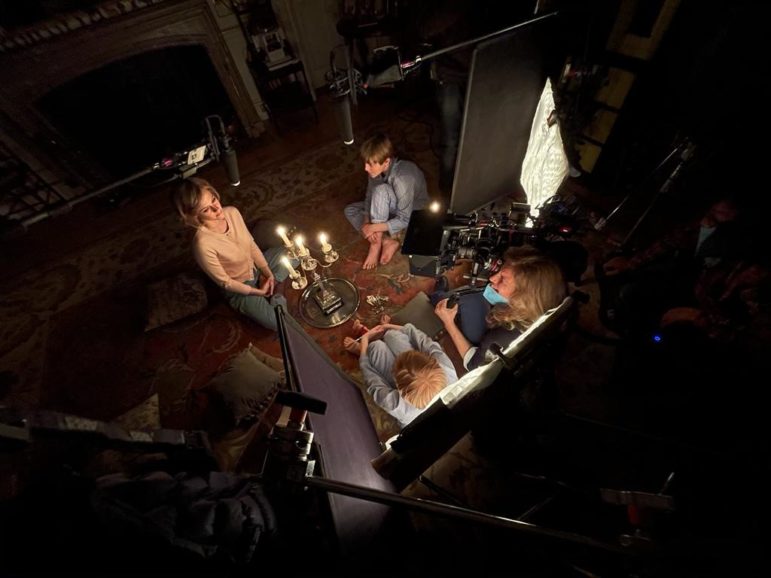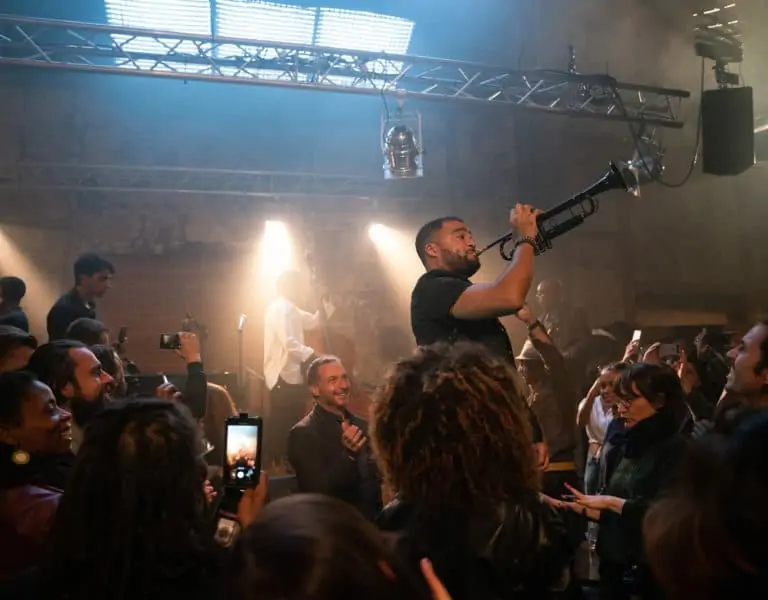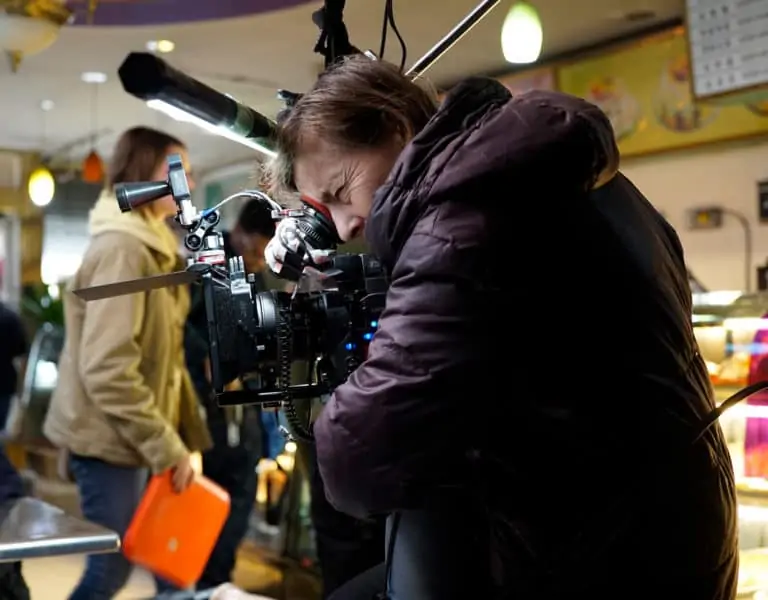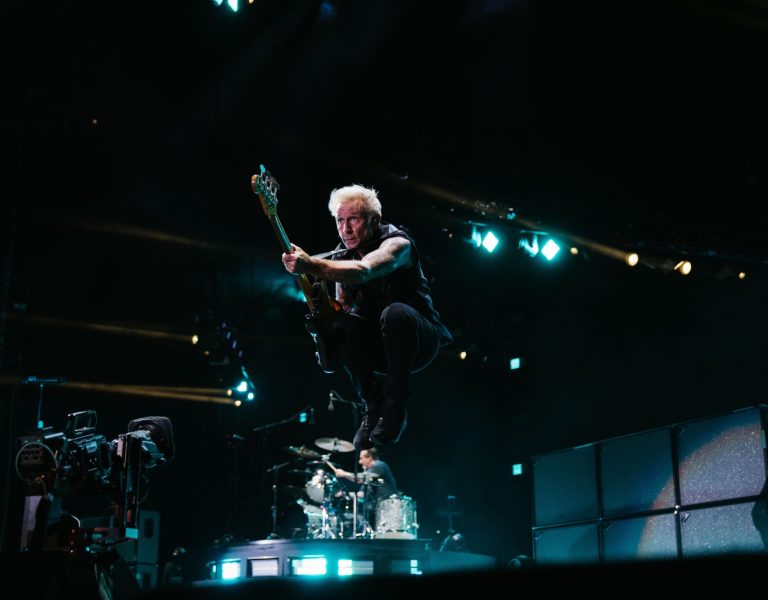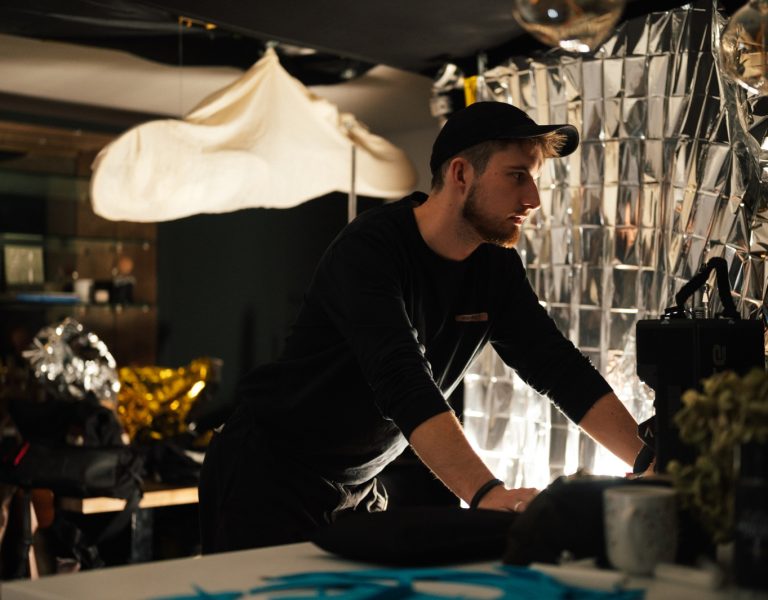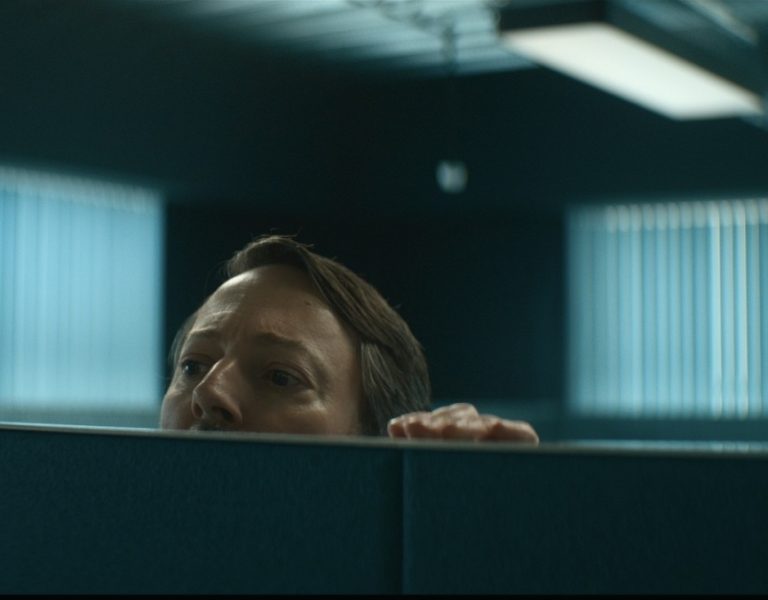PORTRAIT OF A PRINCESS
Claire Mathon AFC reveals how a meticulous reconstruction of the period and characters was achieved when shooting Spencer, a form of“reverse fairy tale” chronicling three days Princess Diana spent at Sandringham in the Christmas of 1991.
Following Jackie (2016) – the cinematic portrait of Jackie Kennedy, starring Natalie Portman – Chilean filmmaker Pablo Larrain has chosen another iconic female character as the focus of his new film. Director of photography Claire Mathon AFC (Portrait of a Lady on Fire, Stranger by the Lake) captured Spencer as Kristen Stewart delivered a stunning performance as Princess Diana.
The story takes place in December 1991, during the last Christmas Diana spent with her husband, Prince Charles, and the rest of the royal family. A “fable from a true tragedy” opens the film. Asked about the biopic as a genre and the one she would have dreamed of shooting in the past, Mathon responds: “In fact, I never really believed in biopics. This narrative exercise about a person who has existed is for me kind of a foil in the context of fiction. It can even be a handicap, because it has its own limitations, and probably fewer possibilities. I believe much more in a portrait, or a documentary to tell the story of a life or a career.
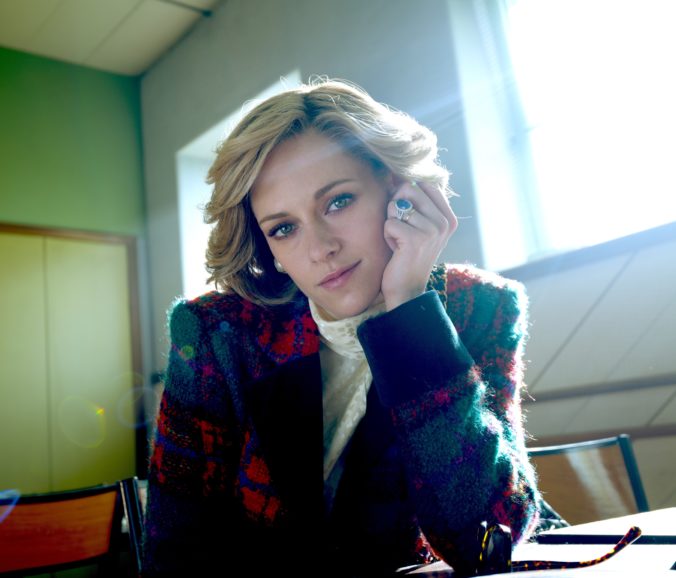
“As for Spencer, I never really considered the project a biopic. First, it is a fable, as the opening line says. Besides, the story only focuses on those three days Diana spent at Sandringham during the Christmas of 1991. We are very far from dealing with the life of a celebrity, or even part of it. This is the story of a princess who refuses to become a queen and build her own identity. I see it as a kind of reverse fairy tale.”
A strangeness of situations colours the film’s opening sequences, even switching to a more fantasy mood in the third act. However, director Larrain and his team have ensured a meticulous reconstruction of the period, the pageantry of the English court, and the likeness of the characters.
“It was very important,” explains Mathon, “to anchor the sets, especially the Sandringham mansion, in reality. We needed to make it believable right away for the audience. For example, we did this using the special Christmas pomp and protocol. The costumes were also very important, inspired by the dresses originally worn by the Princess of Wales, recreated by Jacqueline Durran [who received two Oscars for Joe Wright’s Anna Karenina and Greta Gerwig’s Little Women].
“Kristen Stewart trained a lot to perfect the British accent and characteristic phrasing of Diana – a sophisticated recreation that I eventually forgot through the eyepiece, as the shooting focused more and more on the character’s interiority. She’s definitely the heart of Pablo Larrain’s project. It was important to be as close as possible to the characters, in a sensitive way, looking for a vibrancy and intimate feelings. There are also regular backward jumps where we see her struggling like a small insect seeking the exit from an immense golden prison.”
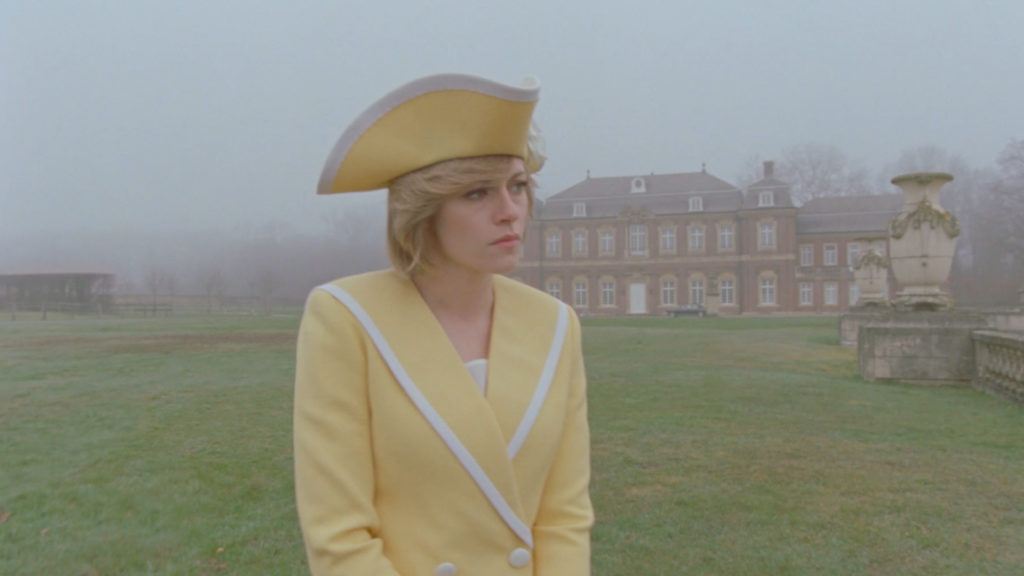
Login to continue reading
This content is exclusively for digital magazine subscribers.
Start your subscription today, or login below to continue.
Maintaining a softness
Filmed for the most part in Germany (the manor of Sandrigham and its close exteriors being recreated at several natural locations in Krondberg, Nordkirchen, and Berlin), the shoot took place over 38 days at the beginning of 2021. The film is shot in natural settings, with the exception of Diana’s bathroom, which had to be recreated on stage.
“Very quickly, we decided with Pablo that it would be shot on film, first to align with this ‘90s period film, but also to create a certain softness,” says Mathon. “This was something that seemed to fit in with Diana’s universe. Some period photographs guided my eye, in particular those of her with her two children. After doing several camera tests with production designer Guy Hendrix Dias, we chose the Super 16 option for most of the scenes. 35mm film was used occasionally for some of the more fragile set-ups, like night scenes. This decision was made because of the ergonomics – many sequences were to be shoulder shot as close as possible to the actors – and because Super 16mm means greater depth of field, less definition, and softness and texture.”
Trying to shoot as much as possible on Kodak Vision3 50D for the Super 16 parts to reduce the film grain, the cinematographer also relied on Vision3 500T for 35mm night scenes. “The difference in grain structure between 16mm and 35mm, even on those two extreme speeds, is obvious in post. That is why I had to tweak each scene in colour grading, degraining a bit on the 16mm shots, and adding grain on the 35mm footage. It’s a rather slow operation because it cannot be processed in real time yet.
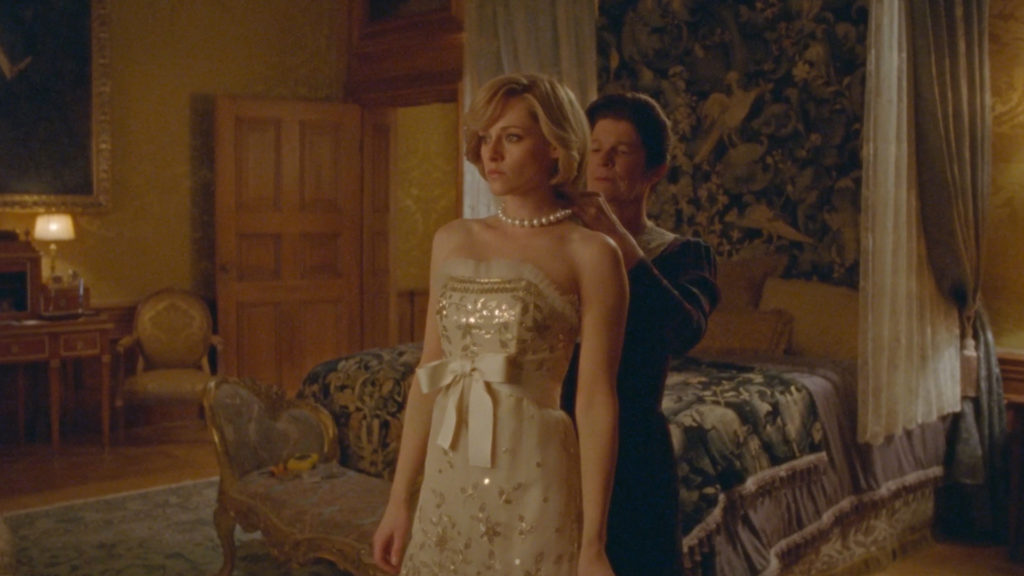
“At the same time, I was trying to stay as close as possible to my idea of softness, with slightly milky blacks. It’s such a touchy subject now, because we have grown so used to a certain contrast level and image brilliance in modern cinematography. To compensate, I tried to work on the contrast through colour with the help of the production designer and costume department. “
Short focal lengths form the basis of the image work on Spencer. Mathon details the challenges this choice can present: “For example, 8mm has often been used for the long dolly shots that Pablo likes, but even for the close-ups of the actors, he encouraged me to work with wide lenses, delighted to see how beautiful Kristen was, even when filmed under these unusual conditions. It gives a feeling of freedom, and it is also a way of separating her from her environment.
“For example, the first sequence in the car at the beginning of the film is shot on a 9.5mm lens. The choice of very short focal lengths in Super 16 is very limited. So, I chose to combine it with the Leitz Summilux-C that I had originally selected for this project and the Zeiss Ultra 16 series. Those were mounted on the ARRI Arriflex 416 for wider than 16mm work (the shortest focal length of the Summilux series). So many scenes, shot in S16 therefore mix both series of glass and required some DI adjustments to match their respective definition and colorimetry.”
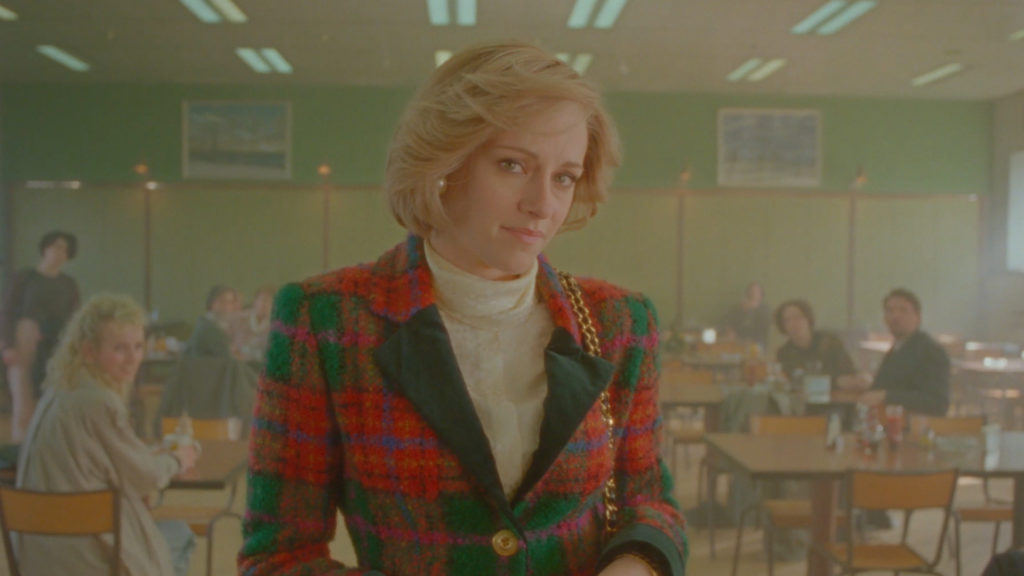
At the end of the prologue, Diana finally reaches Sandringham. She more or less complies with protocol and finally joins the rest of the royal family for a sumptuous Christmas Eve dinner.
“This scene is one of those that was shot in 35mm, with candlelight captured as realistically as possible. I absolutely needed the 500T speed and Summilux T1.4 to capture the scene,” says Mathon. “The depth of field is suddenly shallower, which allowed me to isolate Kristen in focus, even on wide shots. Smoothness also had to be maintained during the timing to match with the S16mm. Blacks were naturally deeper in 35mm, because we weren’t allowed to use smoke in this historical landmark location.”
In terms of light, Barry Lyndon was in the filmmakers’ minds. “The scene actually starts in a kind of 18th century documentary style – with pure candle lighting support – only to gradually reach an increasingly less naturalistic style, wrapping Diana’s face in a strange glow as the scene evolves,” says Mathon. “This sequence is very important in the film because it’s when the fantasy dimension starts to interfere in the narration. As we can see, the pearl necklace is back on Diana’s neck in the following sequence, and we understand that the outcome of this dinner is undoubtedly only the fruit of Diana’s tortured imagination.”
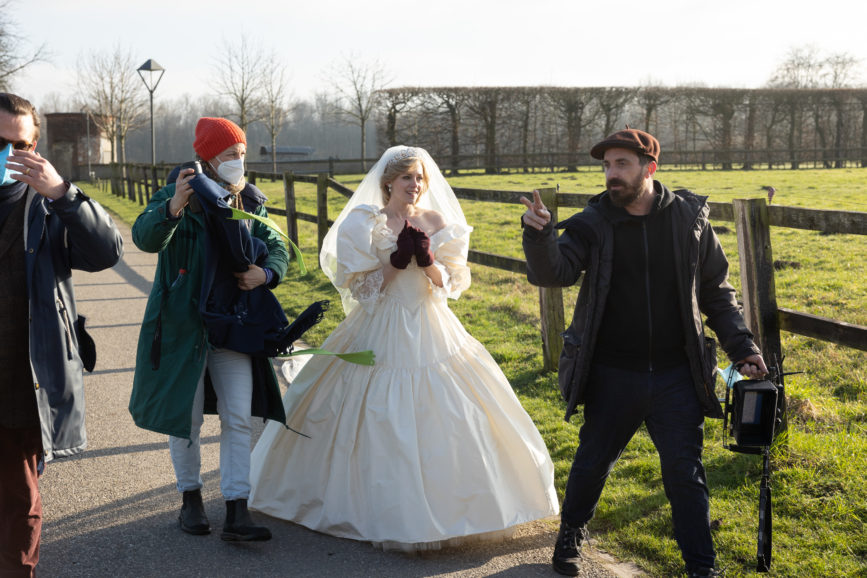
The music, which is gradually starting to change, is also at the centre of Larrain’s staging. “We often talk about rhythm on the set, and choreography,” says Mathon. “In this sequence, the choreography was the waiters’ ballet opening the dinner. There was also live music being played on the stage by a string quartet.”
At the end of the more claustrophobic moments in the palace and its surroundings, the film suddenly offers a breath of fresh air and relief when the following scene establishes the story by the beach.
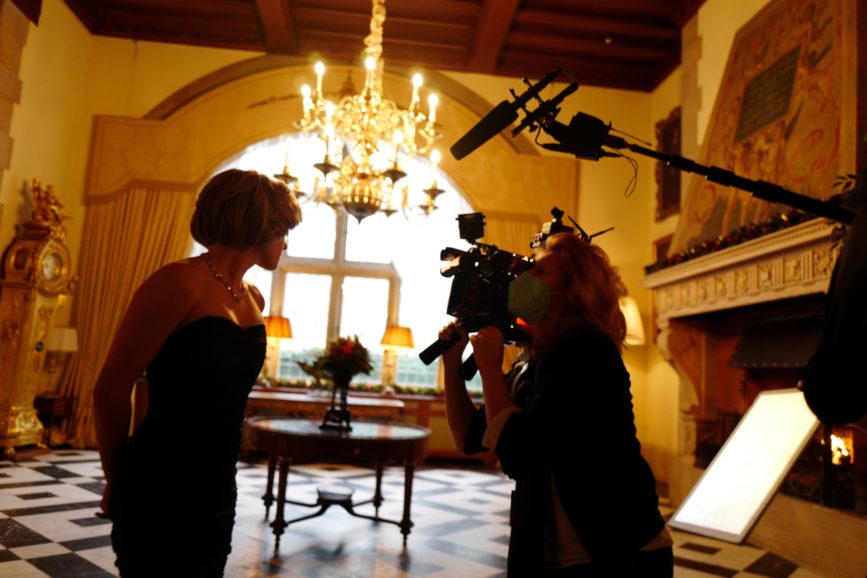
“Even if the mansion’s surroundings lead us to believe we’re in the countryside, the real location in Norfolk is really close to the coast. This scene is also one of the few to have actually been shot there, near the real Sandringham. For this scene between Maggie (Sally Hawkins) and Diana, we first of all tried to find the right place. I can still see myself looking with Pablo for the right height, and the right position with the sun. This edge of the dune, with tall grasses turns into an open-air hiding place.
“The opening on the beach also seemed appropriate to give air to Diana. Her character has a really hard time finding privacy throughout the film. She is constantly observed, even in her own bedroom. Her only private place is her bathroom. This sequence is shot quickly, in Super 16 with 50D in a very short time slot for the light. The two actresses are impressive. For me, this really looks like what we imagined with Pablo for Spencer.
“It was everything we love – this softness offered by the place, the low winter sun. The skin is beautiful, her green and red jacket gives a touch of colour contrast. It remains undoubtedly a reference image for me. In these shots you can find all the simplicity that I sought for this project.”
